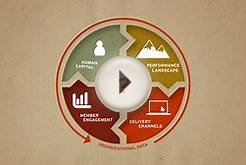By Tom Egelhoff

If there is one mistake small town businesses make more often than any other it's, "What ever is left over, we'll use for advertising."
Marketing and advertising is an investment, not an expense. I know it sure seems like an expense to me when I'm writing the check, but trust me it's not.
Without enough money put aside for advertising your sales can go down and you suddenly have less and less for promotion.
When do you advertise the most? For most businesses it's the first day of business. Don't you have a Grand Opening, balloons, flyers, ads, on-site radio stations, contests, and prizes? Did the income from sales pay for that? No, it didn't. You advertise most when you need business. You advertise more when you don't.
An average cost of advertising is usually 1 to 5% of gross sales, which can vary according to location, local advertising rates, and industry. Car dealers need more advertising than funeral homes.
Before we get to the 25 tips let's look at the basic strategies of successful advertising.
* In order to be successful, your advertising must provide a consumer benefit or solve a problem.
* That benefit or solution must be wanted by the consumer.
* The product or service you are offering must be tied directly to that benefit or solution.
* The benefit or solution must be distinctly communicated through medial advertising. In other words, be clear, forget the advertising glitz and make sure the message isn't lost in the ad.
A small-budget advertiser doesn't have the ''deep pockets" to develop big advertising campaigns. Some time you need to break the rules to be noticed. Avis did it by admitting they were "Number 2" in the car rental business and that campaign took them from 6th place to second place. When they stopped that campaign they dropped back to 6th again. In the past year they have gone back to it.
Budget conscious advertisers must achieve top results for their advertising dollar. Expand your dollars by adopting some creative techniques.
Here's 25 tips I hope will help you.
- Radio, newspapers and magazine specialists will frequently give free help in developing an advertising strategy. Things like demographic information, money-saving ways to produce your ads etc.
- Place your ads in off hours or in unusual locations for less. Many times you can still reach your target market with these spots.
- Instead of a one-time big splash ad, be consistent with frequent small ads that work.
- Monthly magazines sometimes have unsold ad space at the end of the month they will sell at a discount.
- If you have an 800 number, put it in every ad for immediate response and feedback.
- Try advertising consistently in the classifieds. These ads may draw more customers than more expensive display ads.
- Can you barter for the cost of ad production? Maybe the newspaper needs painting in exchange for an ad about your paint store.
- Piggyback advertising are the ads you receive with your Mastercard bill. Is there someone in your town that sends out a lot of bills? Can you put a small flyer in with their bills and split the postage? Or pay a small fee?
- Split advertising costs with the people who sell to you. Vendors and manufactures are always looking for exposure. Let people know you carry their products and have the vendor pick up part of the ad cost.
- Are there up front advertising discounts for cash?
- Consider advertising in regional issues of national magazines. The costs are lower and you can still reach your target market. TV Guide is a good choice. It stays around for at least a week. Time, Newsweek, and US News and World Report may stay in local doctors offices for years.
- Share ad costs with neighbor business. Video stores and Pizza parlors are natural partners. Have coupons to each others stores or share the cost of flyers.
- Try reducing the size of your ad (not in the Yellow Pages) or length of your radio spots. A...














